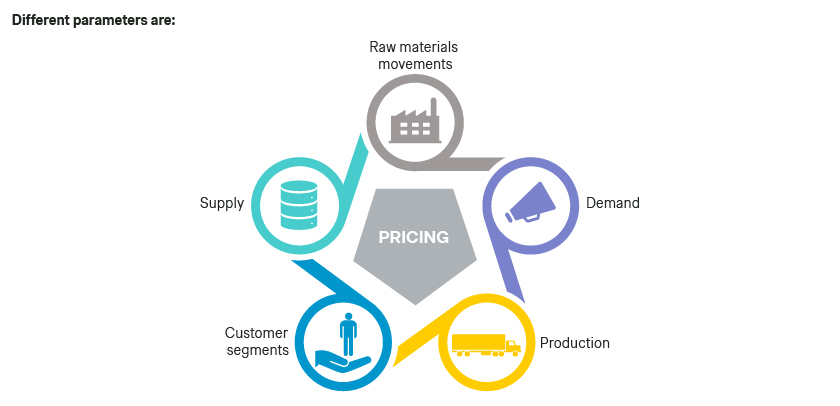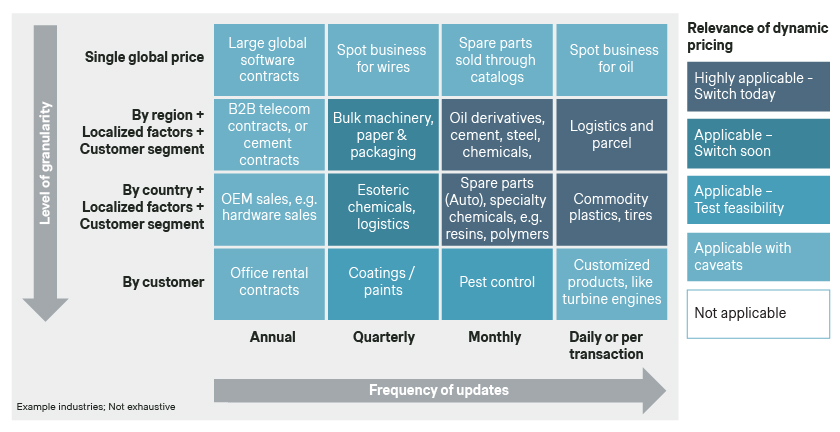Inflation, supply chain disruptions, and demand changes are causing major market upheaval. Your prices and pricing strategy need to reflect market realities, ideally in real time, all the while capturing customers’ willingness to pay. This alignment, or lack of it, could strongly influence your short and long-term profitability.
Dynamic pricing is the practice of changing prices based on continuously updated data, such as supply and demand, production and inventory levels, and macro factors. Advanced analytics and machine-learning-based models support this dynamic approach, which is becoming increasingly feasible and effective thanks to vast amounts of accessible data.
In B2B industries, there are several factors driving price:

How can B2B companies make sense of all these factors?
The number and diversity of these factors can be overwhelming, making it difficult to predict how they influence prices. Moreover, the scale and extent of the input data involved in dynamic pricing are difficult for humans to effectively process and interpret.
Even when you manage to grasp the intricacies of dynamic pricing, generating actionable insights and understanding the "so what" behind these fluctuations can be tricky. The reasons behind a price increase or decrease are often elusive, especially for customers. Dynamic pricing requires a deep understanding of the interplay between all the influencing factors and a level of analytical expertise.
Effective implementation of B2B dynamic pricing is crucial for driving growth. However, it requires careful consideration of design choices and change management challenges.
Learn more about how we can help you build effective pricing engines here.
Dynamic pricing can work in most B2B industries. Its relevance is driven by how granularly you set your prices, i.e., do you have a single global price or a transaction-level price? The other dimension is time, i.e., do you set prices on an annual, quarterly, monthly, or daily basis? This approach works well in industries like tires, spare parts, etc.

How Simon-Kucher can help
At Simon-Kucher, our approach to dynamic pricing encompasses three key pillars: strategic advice, data science expertise, and software and technology guidance.
We assess the feasibility of implementing machine learning (ML) into your pricing strategy, considering factors such as your industry, competitive landscape, and organizational capabilities. Change management is at the core of our work, ensuring that the transformation required for dynamic pricing is seamlessly integrated into your operations.
We don't simply advocate for ML; we recommend it where it makes sense for your specific situation. Our data science team specializes in the analysis, modeling, testing, and evaluation of pricing algorithms. This approach is grounded in practicality and real-world results, ensuring that the algorithms we develop align with your business objectives.
Meanwhile, our software and technology experts help you navigate the technical requirements of dynamic pricing, guiding you through the vendor selection process and ensuring that the chosen technology aligns with your unique needs.
Read more about how Simon-Kucher can help you successfully implement dynamic pricing here.
Explore all the insights from our B2B Masterclass
Unlock practical strategies in B2B pricing, sales, and marketing








